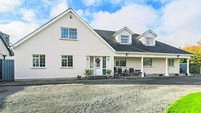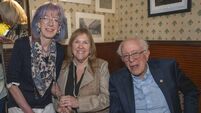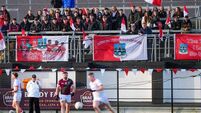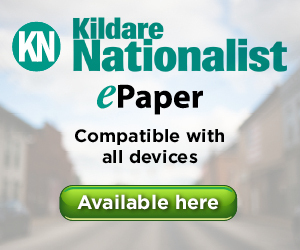The rich history of Athy Town Hall

Athys Shackleton Museum
I WAS privileged during the week to have a guided tour of the interior of the future Shackleton Museum. What I saw was very impressive and indicated the quality of workmanship which I am afraid did not appear in the ancient building I was so familiar with over the years.
I cannot remember when I first saw the interior of the town hall, but it was I believe sometime in the mid-1950s when Paddy Wright, Teddy Kelly and I gained access to an upper floor room, while a dance was in its early stages in the ballroom.
Denis Cogan, the former county architect for Kildare, writing in the Kildare Archaeological Society Journal of 1991, suggested that Athy Town Hall may have been the first of the Palladian style civic buildings built in Ireland.
The original town hall was built in the second or third decade of the 18th century. Bishop Pococke on his tour of Ireland in 1752 made reference to the ‘new market house in Athy’.
Rocque’s map of Athy prepared for the Earl of Kildare four years after Pococke’s visit to Athy, shows a T-shaped building which Denis Cogan believes was an open cross-vaulted market house on the ground floor, with a courtroom and assembly rooms overhead.
Nicholas Sheaff, director of the Irish Architectural Archives, in his report of 1984 stated his belief that the square in front of the town hall was laid out at the same time as the town hall’s construction, with the town hall designed as the architectural focus.
The style of the building reflected, according to Sheaff, a sophisticated Palladian classicalism on the part of the designer, suggesting that the design came from the offices of Richard Cassels, the leading Irish Palladian architect of the 18th century.
The town hall has been much altered over the years, with extensions both in front and rear of the original building. The mid-19th century extension to the front of the building was the most important extension and consisted of rubble masonry walls, with tooled limestone string course. In 1913, a further alteration was made to the town hall when the earlier extension to the front of the building was raised by a storey, as was the 18th century centre section, making the entire façade three stories high.
The much-altered building was again the subject of building work when in 1969 the central part of the ground floor was adopted for use as a fire station. With the building of the new town council offices in Rathstewart in 1985 the Town Hall became vacant and fell into a derelict state.
Kildare County Council, which had earlier purchased the property from the Duke of Leinster, subsequently restored the building under an AnCO training scheme which was completed in May 1990.
One of the oldest elements of the town hall is a bell which originally hung from a frame which stood in the roof of the two-storey centre section before it was heightened in the mid-18th century. The bell came from the Church of Ireland Parish Church which stood in the rear square behind the Town Hall before it was demolished following the building of St Michael’s Church at the top of Offaly Street in 1840.
Macra na Feirme, which was established by local men Paddy Kehoe, Stephen Cullinane, Juan Greene, E. Minch and A. Spiers, established its headquarters in the Town Hall room vacated by the Athy Mechanics Institute in 1947.
The first library in the town of Athy opened in the town hall on 1 December 1927. It was operated by Kildare County Council. A local library committee was set up and was intended to comprise the local Parish Priest Canon Mackey, his three curates, Rev Dunlop of the Church of Ireland and the Reverend Meek of the Presbyterian Church.
The six clerics and its fellow committee members, five local Urban District councillors and the town clerk, James Lawler who acted as the library secretary, made up the committee.
By the time I became aware of the local building amongst which I played daily, the Town Hall’s ground floor was still used as a marketplace. To the rear of the building was a weighing scales, managed by Jim Dempsey who lived in Offaly Street. His offices were still at use until the Fire Brigade moved into the ground floor of the town Hhall There were many uses of the town hall over the centuries, including the location of the Free Masons Club in the building over many decades. The Parish School, operated by the Church of Ireland, was reported in 1824 to have 157 pupils on its roll, with an average attendance of 50 boys and 35 girls. Located in the Town Hall the headmaster of the school was James Hunter and the headmistress Lydia Hunter.
In February 1917, Athy Hibernian Players put on a play in the Town Hall and the subsequent press reports give the names of those involved whom it is said stood to attention for the singing of .
Those named were the first publicly identified Nationalist sympathisers in Athy and many of them figured prominently in the local Sinn Fein Club which was formed in June 1917. On 19 July 1917 Athy’s newly established Sinn Fein Club organised a concert in the Town Hall in aid of the families of those killed in the Easter Rising. The audience was addressed by Arthur Griffith, the founder of Sinn Fein.
Another famous visitor to the town hall was Charles Stewart Parnell who arrived in Athy in 1880 to chair the parliamentary nomination for the upcoming election. James Leahy, a farmer from Ardscull and one-time Chairman of Athy Town Commissioners, was nominated despite Parnell’s early objection as he felt that Leahy: ‘This fat man will be of no use, he will fall asleep in the House’.
Having cross-examined the prospective candidate, Parnell was apparently satisfied and allowed the nomination to go ahead. Leahy was to have a constant if unspectacular, presence in the House of Commons until 1895.
The story of Athy’s Town Hall tells us more of the history of the organisations and the people who used the town hall over the years. Their story will hopefully be told on another day, but in the meantime, we welcome the adoption of the Town Hall for use exclusively as a Shackleton Museum.






